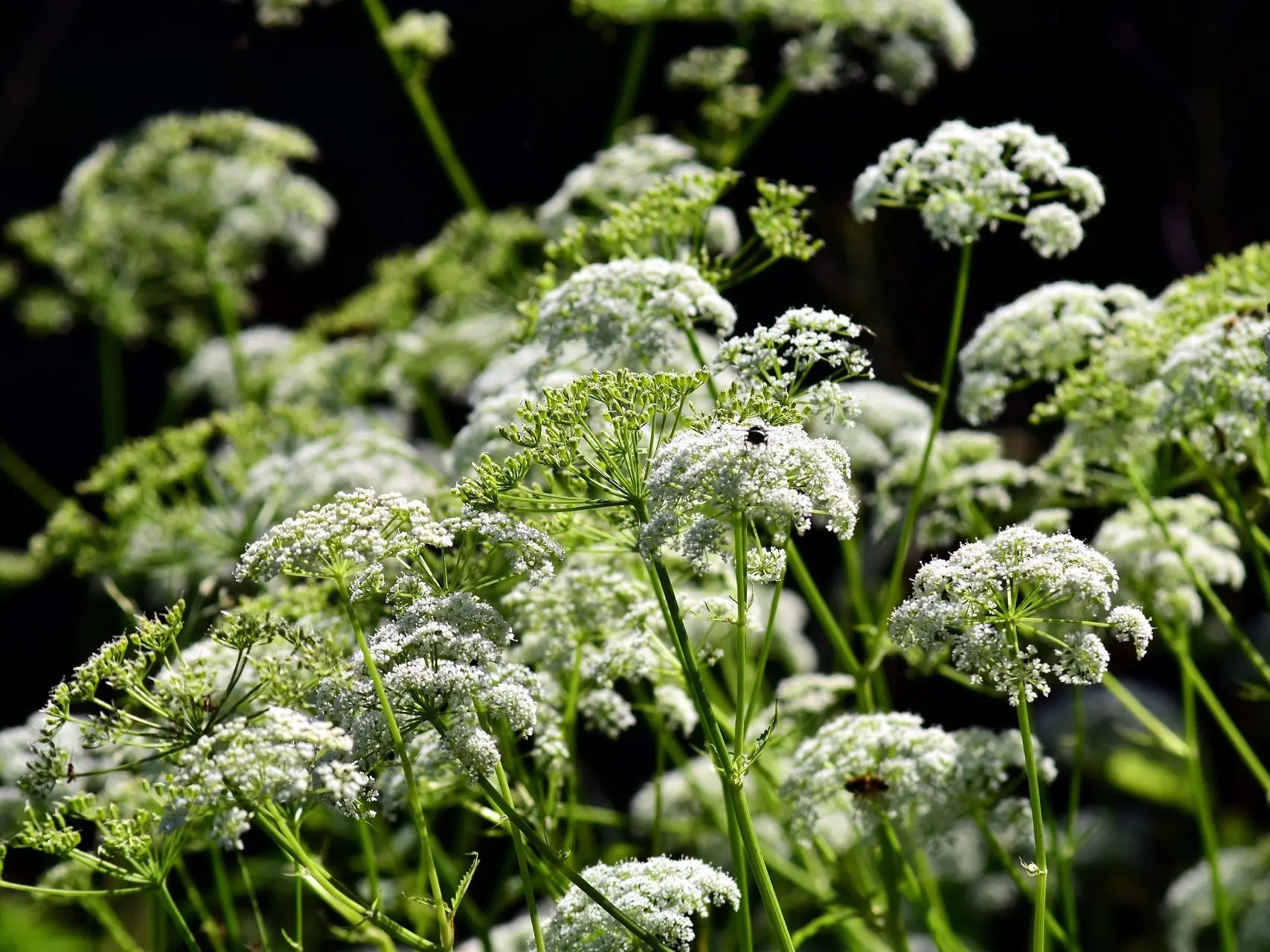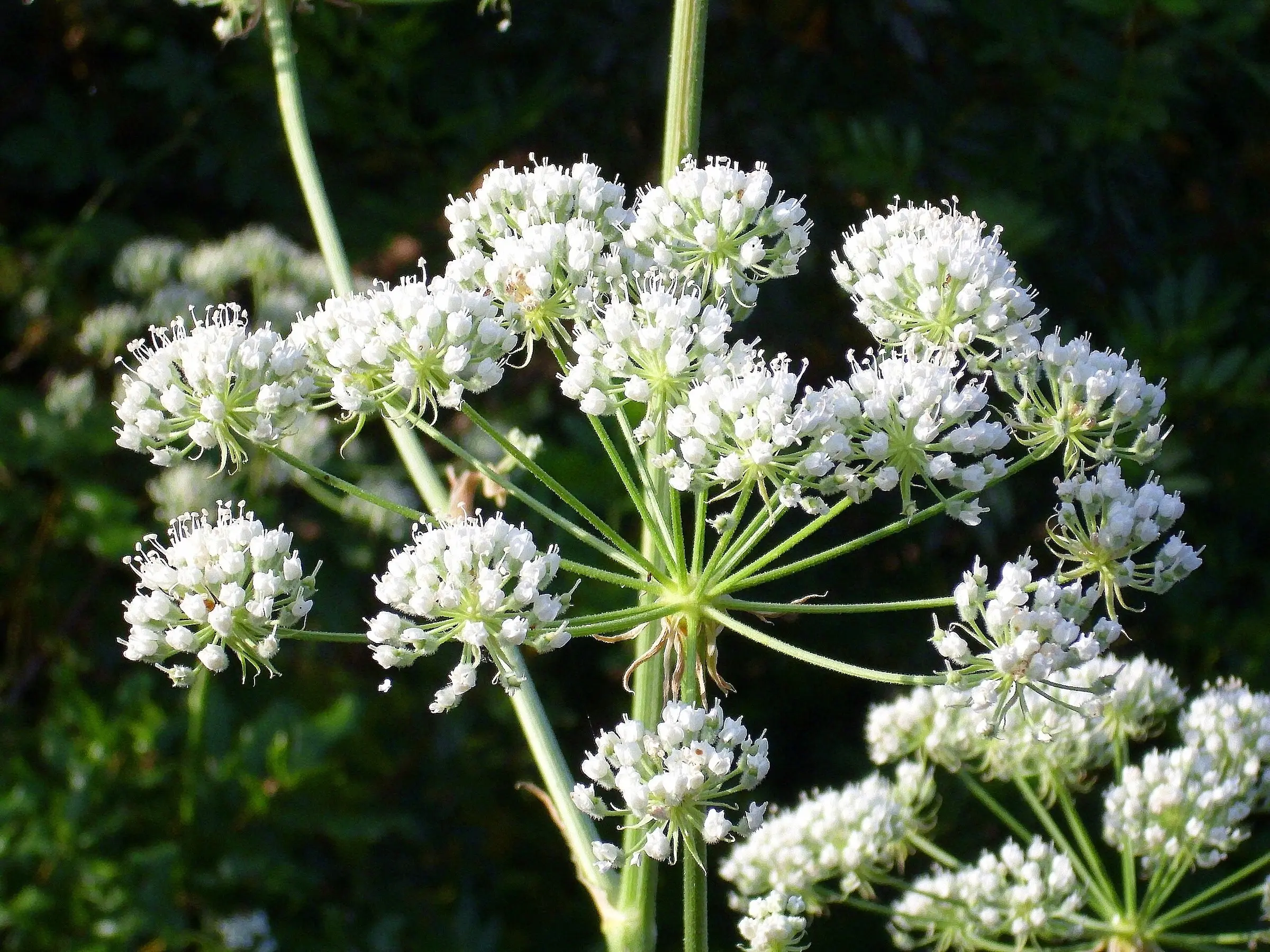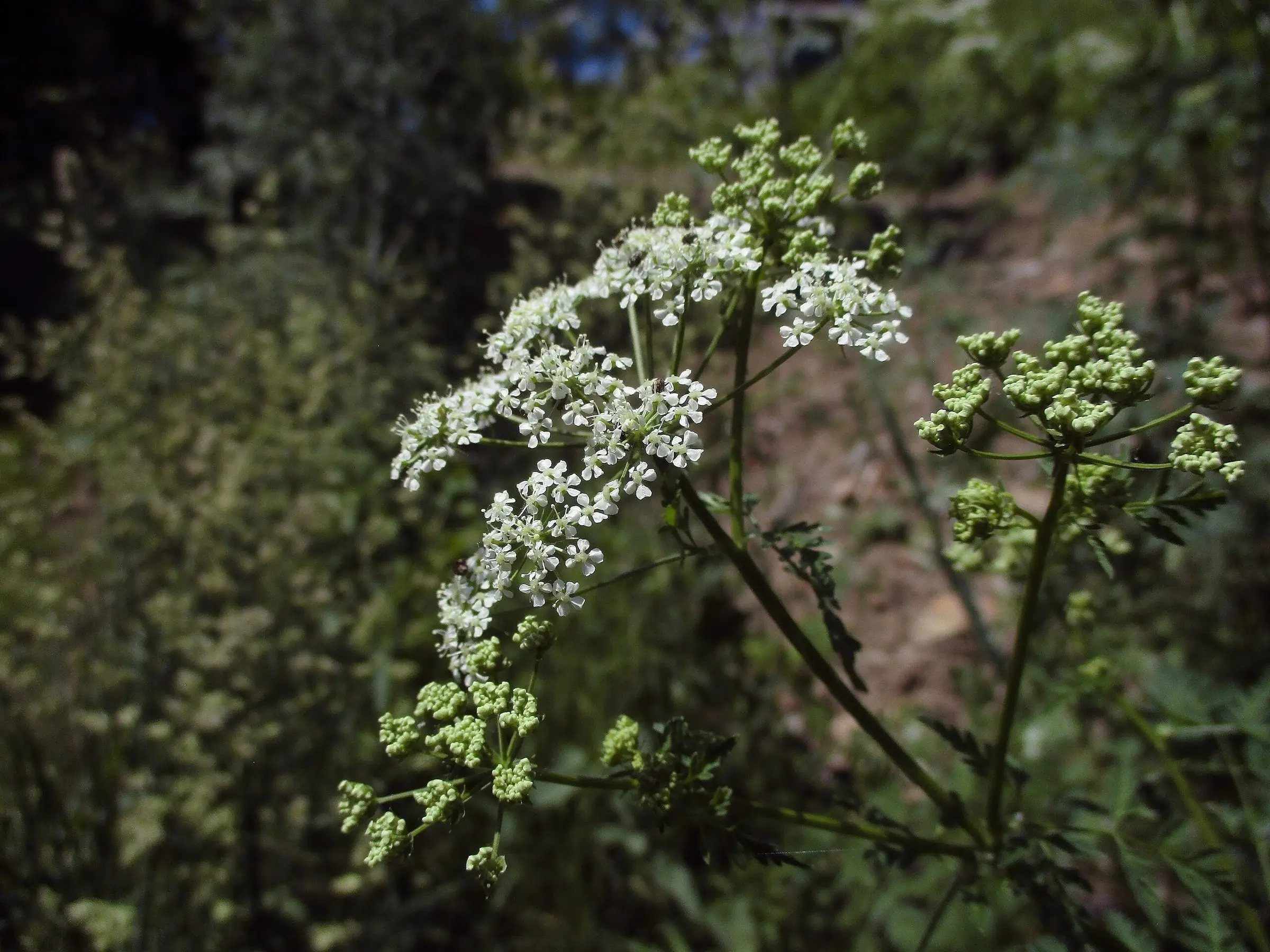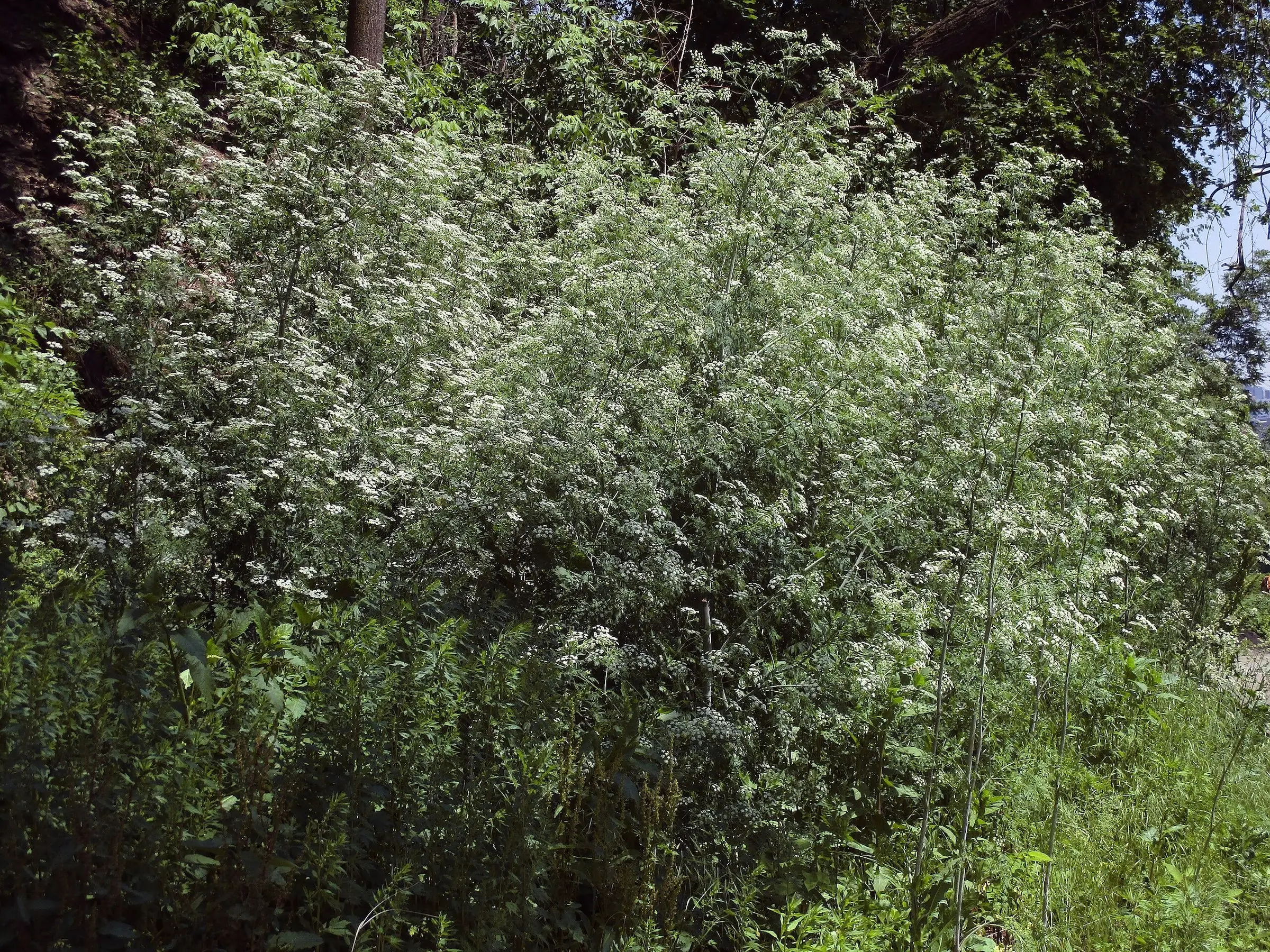
Names
Conium maculatum, Poison Hemlock, Spotted Hemlock, Cowbane, Water Hemlock, Elephant Parsley
Description
A biennial that can grow to ten feet. Stems are waxy and generally have purple blotches. Leaves are fern-like in appearance and alternate on the stem flowers are white and grow in clumps. Fruit is green with rings. The plant stinks.

Concern Level
Due to it’s high toxicity, concern is great anytime it is present.
Toxic Parts
All parts of the plant, even physical contact with the leaves can cause vision to blur and upset stomach.

Symptoms
Occur within minutes of ingestion, foaming at the mouth, anxiety, dilated pupils, rapid pulse, convulsions and jaw clamping, tremors, lack of coordination, drooling, frequent bowel movements and urination, heavy breathing, weakness, paralysis, death.
Danger
Contains piperidine alkaloids which cause respiratory failure. Death can occur within 15 minutes of ingestion.

More Information
*It should be noted that we are not veterinarians. This information is written specifically for horses and should be used for reference purposes only. If you think your horse has eaten something toxic call your vet right away.